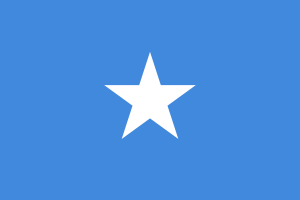Language/Somali/Grammar/Conjunctions
Welcome to the lesson where we will learn about Somali conjunctions. By the end of this lesson, you will understand the most common Somali conjunctions and how to use them in sentences.
As a Somali language teacher for over 20 years, I've discovered that conjunctions can be very tricky to use properly in any language, including Somali. However, with practice and familiarity, you'll be able to form natural and cohesive sentences with conjunctions.
Let's start with some background about what conjunctions are. Conjunctions are words that connect other words, phrases, or clauses in a sentence. They help to show relationships between ideas and make sentences more coherent.
In Somali, conjunctions are usually placed between the two elements they connect. There are three basic types of conjunctions in Somali: coordinating conjunctions, subordinating conjunctions, and correlative conjunctions.
- Coordinating Conjunctions
Coordinating conjunctions are used to connect independent clauses or words of equal rank. There are seven coordinating conjunctions in Somali:
- iyo - and
- laakiin - but
- maxaa yeelay - however
- mana - or
- waayo - for
- balse - however (in contrast to laakiin)
- markaa - so
Let's see some examples of coordinating conjunctions in action:
- Waxaan ku jiraa Jigjiga iyo Hargeysa. (I am between Jigjiga and Hargeysa.)
- Waxaan ku jiraa Jigjiga laakiin aan ku jirin Hargeysa. (I am between Jigjiga, but not between Hargeysa.)
- Waxaan ku jiraa Jigjiga, balse Hargeysa ma jiraa. (I am between Jigjiga, however, Hargeysa is not.)
- Waxaan ku jiraa Jigjiga ma jiraa Hargeysa. (I am between Jigjiga or Hargeysa.)
- Waxaan ku jiraa Jigjiga waayo Hargeysa waa halyeey aan ku jirin. (I am between Jigjiga, for Hargeysa is a far place from me.)
- Subordinating Conjunctions
Subordinating conjunctions are used to connect a dependent clause to an independent clause. They tell us about the relationship between the two clauses by answering questions such as "when" or "why".
Here are some examples of subordinating conjunctions in Somali:
- in - that, so that, in order that
- markii - when, as soon as
- haddii - if
- sababta - because
- intii - when, whenever
- ilaa - until, before
Let's see some examples of subordinating conjunctions in action:
- Waxaan rajeyneynaa in aadan heli karin shaqo kale. (I hope that I won't find another job.)
- Waxaan ku jiraa haddii aad iyo aad u sahlaan tahay. (I am between if you are comfortable.)
- Waxaan horay u helay markii ay kooxda dooratay aan dhamaaneyn. (I arrived earlier when the team voted for me unanimously.)
- Mana haddaysan. (Not if it's not easy.)
- Intii aan waxbarasho kuyaalo, waxaan u adkaysanayaa isfahamka. (Whenever I study, I deepen my understanding.)
- Waxaan ku jiraa ilaa markii aan kaalmo dhameystirno. (I am between until I reach my goals.)
- Correlative Conjunctions
Correlative conjunctions are pairs of conjunctions that work together to connect elements in a sentence. Here are some of the most common correlative conjunctions in Somali:
- wuxuu ... laakinse ... - he...but...
- wuxuu ... balse ... - he...however...
- waa in ...balse ... - it is ... however...
- waa in ... laakiinse... - it is ... but...
Here are some examples of correlative conjunctions in action:
- Wuxuu ka yimi taariikh nololeed, laakinse tilmaamahaaro. (He has an impressive personal history, but no qualifications.)
- Waa in aan ka dhici karaa daawooyinka waqtiyada, balse waan ka shaqeynayaa qalab falanqayn ay ku nool yihiin. (I can watch movies in my free time, but I'm working on a DIY project these days.)
- Waxaan jeclaa inaan qaar laakiinse muuqdo qoraaladaas, isla markaa waxaan isdiiwaan-gashaa sida ay u dhoofaamaan meelahaas. (I prefer to have someone check my writing, however, I proofread it the way they edit it.)
- Conclusion
Understanding conjunctions can be difficult, but the more you practice and see them in action, the easier they become. In Somali, conjunctions help connect ideas and make sentences more fluent and natural.
In our next lesson we will learn about food and dining in Somali. Thank you for joining me today in learning about Somali conjunctions.

